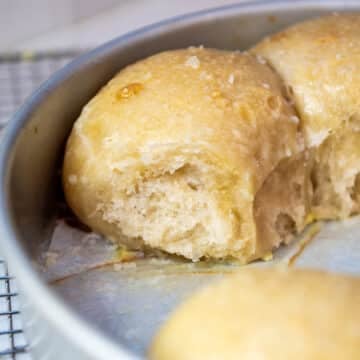This Sourdough Sandwich Bread is my go-to for breakfast and lunches. It's made with only 6 simple ingredients, and it has that perfect sourdough tang without the hard crust. If you love sourdough but need something easy you can use every day, this is it.

I’ve made a lot of sourdough recipes over the years, but this sandwich sandwich bread might just be my favorite. The touch of oil and honey in the dough keeps it soft and tender, making it perfect for everything from French toast to a simple PB&J. My kids love it for school lunches, and I love it toasted with avocado or as a grilled cheese. It really is the best of both worlds.
What's In This Blog Post?
Ingredients Needed
These ingredients are all you need to bake a soft, tender loaf of sourdough sandwich bread at home.
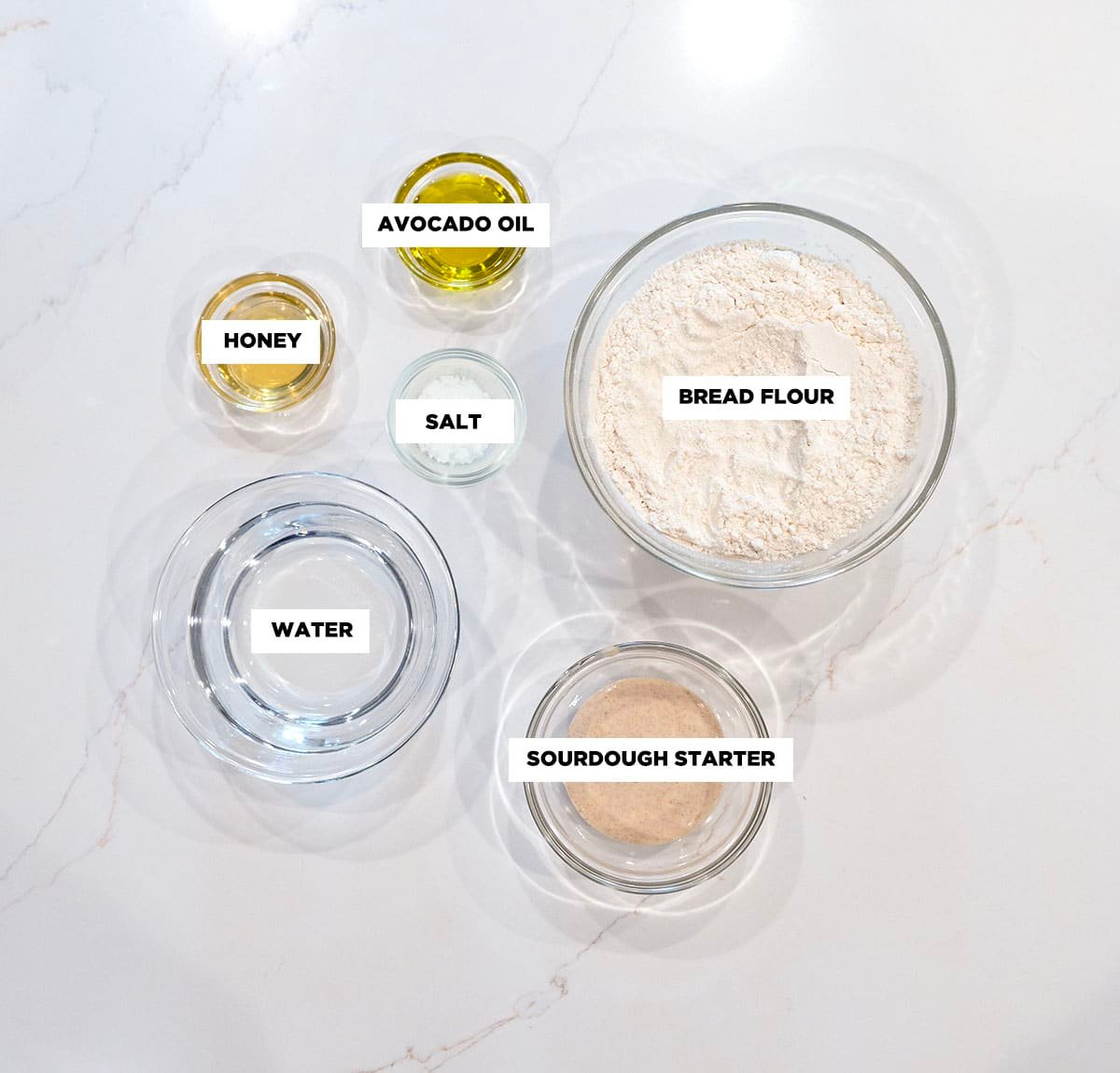
- Active Sourdough Starter – Make sure your active starter is bubbly and at room temperature for the best rise. If you don’t have your own sourdough starter, you can use active dry yeast or a no-knead dough as a substitute, though the flavor will be slightly different.
- Warm Water – Lukewarm water helps activate the starter without harming the wild yeast. You can also use warm milk for a richer, softer crumb.
- Avocado Oil – Adds moisture without a strong flavor. Substitute with olive oil, canola oil, or melted butter.
- Honey – Provides a subtle sweetness and helps the crust brown beautifully. Substitute with maple syrup, agave, or granulated sugar.
- Unbleached Bread Flour – Gives structure and chewiness. You can replace up to 50% with whole wheat or all-purpose flour for a different flavor and texture.
- Salt – Enhances flavor and strengthens gluten. Use kosher or sea salt if that’s what you have on hand. And don't forget to finish with a sprinkle of flaky salt!
Equipment Needed
Food Scale – A food scale ensures accuracy when measuring ingredients, which is especially important for baking. It helps you achieve the right dough consistency and balance between flour, water, and starter every time.
Digital Thermometer – Use a digital thermometer to check the internal temperature of your rolls after baking. They’re perfectly done when they reach 205°F, ensuring a soft, fluffy interior without being underbaked.
Sourdough Essentials – If you’re new to sourdough baking, check out my Beginners Sourdough Bread Recipe. The essential tools you will need are a dough scraper, proofing basket, dough whisk, and Weck jars for storing your starter.
Tips and Tricks for Success
- Use an active starter: For best results, use an active sourdough starter. Your dough will rise best if your starter is bubbly and recently fed.
- Check temperature: Check water and dough temperatures to keep fermentation consistent.
- Be gentle with folding: Stretching and folding develops gluten without overworking the dough, giving airy rolls.
- Don’t skip the second rise: This ensures a light crumb and soft crust instead of a dense loaf.
- Brush with butter: For a golden brown crust, brush the top of the loaf with a touch of butter or oil before baking.
- Cool before slicing: Cool your loaf of bread on a cooling rack before slicing for a tender interior.
How To Make A Warm Sourdough Environment
Remember, sourdough is completely controlled by heat. If your house cold it can take much longer for the dough to rise. Go by visual que's not just time.
I like to use my Brod and Taylor Sourdough Proofer so that I can get my sourdough to proof no matter how hot or cold it is in my house.
1. Oven with the Light On - Place your covered dough inside the oven (turned off) and switch on the oven light. The light alone usually keeps the inside around 75–85°F, which is ideal for fermentation.
2. Microwave “Proofing Box” - Boil a cup of water in the microwave for 2–3 minutes, then push it to the corner. Place your covered dough inside and close the door. The residual steam and heat create a warm, humid environment. (Reheat the water every few hours if needed.)
3. On Top of a Warm Appliance - Set the dough on top of something that gives off gentle heat, like:
- A refrigerator (often slightly warm on top)
- A cable box, router, or dehydrator
- A turned-off but still-warm oven or stovetop
4. Heating Pad or Electric Blanket - Place a folded towel or baking sheet between the heating pad and your bowl to avoid overheating. Set it on low and monitor the temperature.
5. Warm Water Bath - Place the bowl or proofing container in a larger bowl of warm water (around 80°F). This gently warms the dough from underneath. Keep an eye on it so it doesn’t get too hot.
6. Proofing Box or DIY Cooler Setup - If you have a proofing box, this is the easiest way to keep things steady. If not, you can create one with:
- A small insulated cooler
- A mug of hot water inside to warm the air
- Your covered dough next to it
7. Sunlit Spot or Near a Window - A sunny window ledge can give a nice boost during the day, but make sure it doesn’t get too hot or direct sunlight doesn’t dry the surface of your dough.
8. Inside the Oven with a Bowl of Hot Water - Place your dough on the top rack and a bowl of boiling water on the lower rack. Close the oven door. This creates a warm, steamy chamber that’s excellent for fermentation.
How to Make Sourdough Sandwich Bread
Here’s how to make this homemade sourdough sandwich bread from start to finish. Each step guides you through mixing, folding, rising, and baking so your loaf comes out perfect every time.
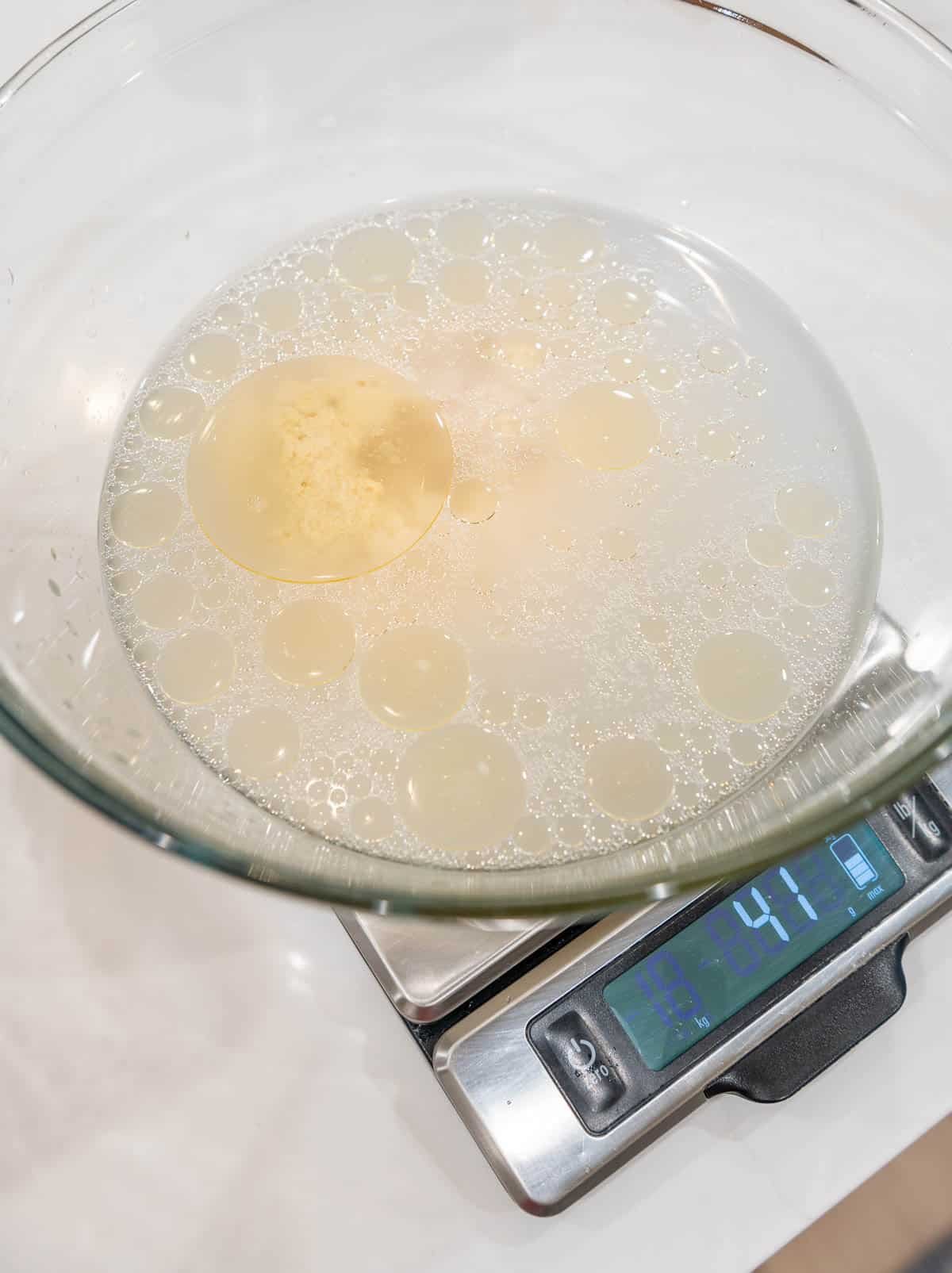
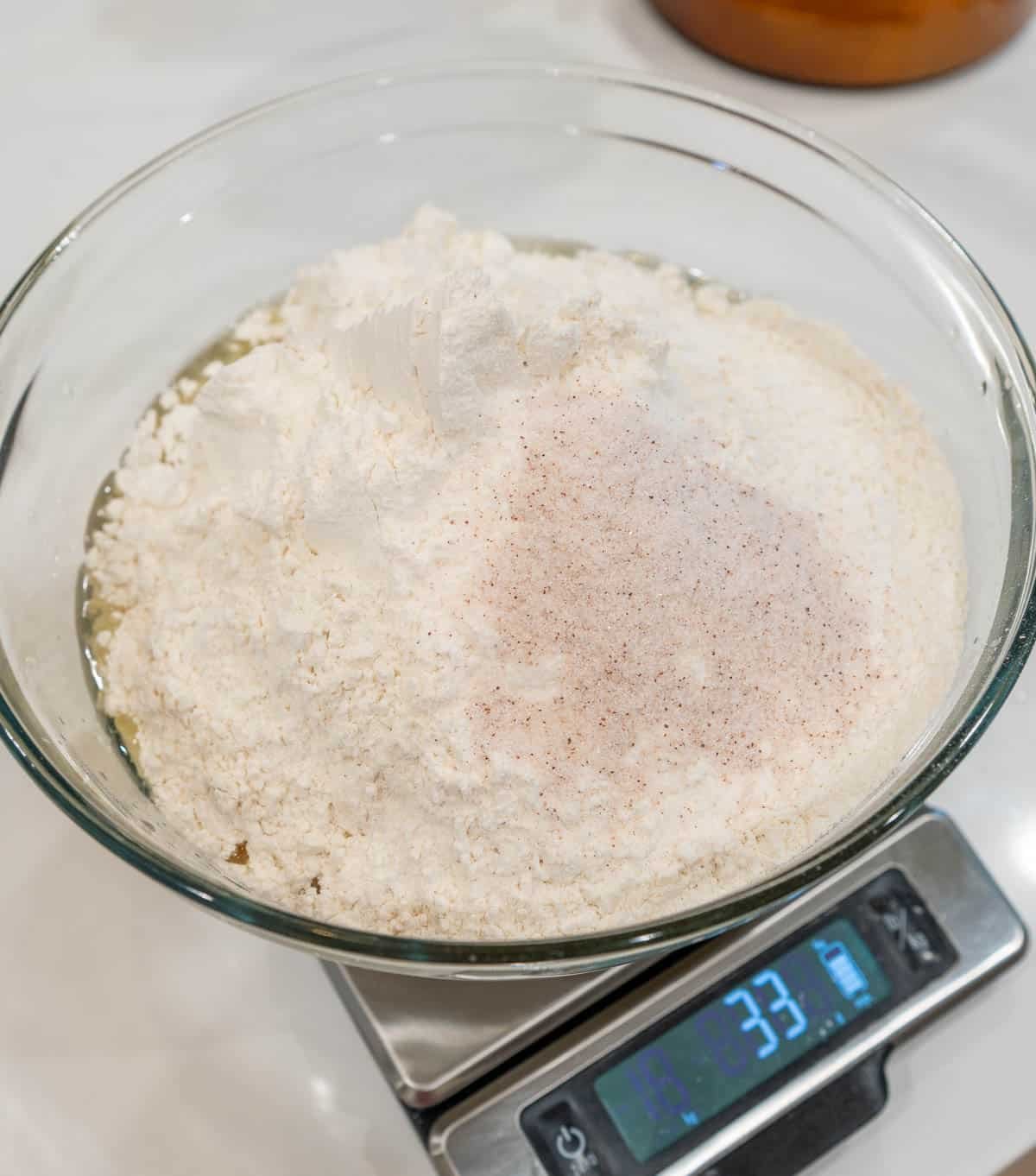
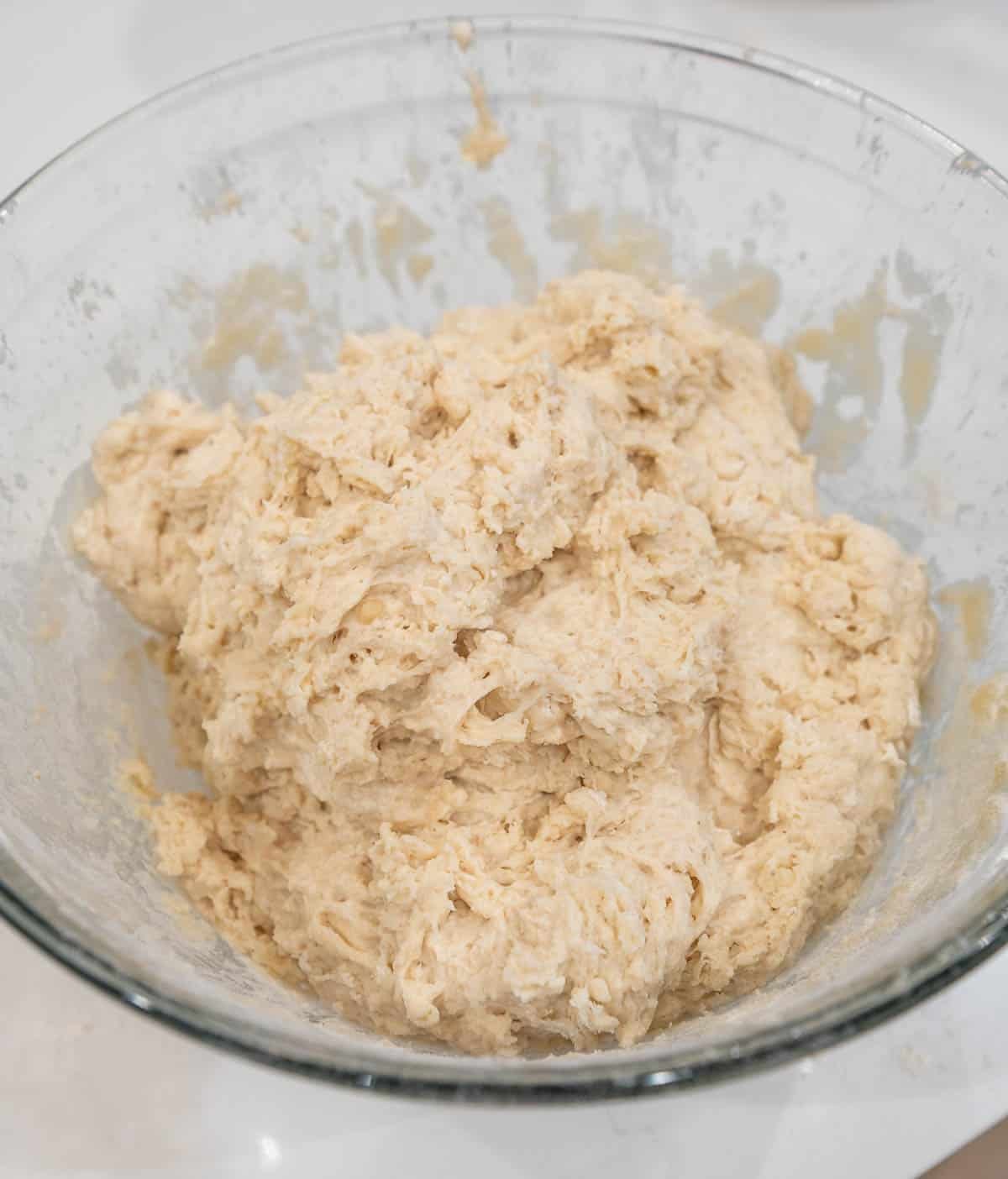


- Combine Ingredients – In a large mixing bowl, combine the active sourdough starter, warm water, avocado oil, and honey until smooth. Add the flour and salt, then cover with plastic wrap or a tea towel and let it rest for 1 hour.
- Stretch & Fold – Perform 4 sets of stretch-and-folds, 30 minutes apart, to develop gluten and create a smooth dough.
- Bulk Ferment (First Rise)– Cover and let rise 4–8 hours, or overnight for a long fermentation process. During bulk fermentation, the dough should double in size and look bubbly and airy.
- Shape – Lightly flour your work surface, shape the dough like shown in the video, and place in a greased loaf pan seam side down. The dough should reach about halfway up the rim of the pan.
- Second Rise – Cover and let rise about 2 hours in a warm place, until the dough is puffy and just above the top of the pan. Don't skip this step or you can end up with gummy bread!
- Bake – Preheat oven to 400°F (200°C). Score the top of the loaf, and bake for 30 minutes then, reduce to 375°F for another 15 minutes.
- Temp – Use a digital thermometer to check for doneness. Bread should be 205°F.
- Cool – Remove from pan immediately and let cool on a cooling rack.
Frequently Asked Questions
Yes. Honey adds a subtle sweetness and helps with browning, but you can substitute maple syrup, agave, or even granulated sugar.
Yes! Cool completely, then wrap in aluminum foil and store in an airtight container or plastic bag for up to 3 months. Reheat in the oven for that just-baked freshness.
Yes, but bread flour gives a stronger structure and a more chewy texture. Using all-purpose flour will make the loaf slightly softer and lighter.
Absolutely! Herbs, garlic, and cheese can be folded into the dough during the stretch-and-fold process for extra flavor.
Yes! After the first rise, cover the bowl and refrigerate for an overnight cold proof. Shape and bake the next day once the dough returns to room temperature.
No. You can absolutely make this by hand. A bosch mixer or stand mixer with a dough hook attachment makes things faster, but the stretch-and-fold method works beautifully for anyone baking for the first time.
Recipe

Equipment
- 1 Thermometer
- 1 Food Scale
Ingredients
- 150 grams active sourdough starter
- 325 grams warm water
- 20 grams avocado oil
- 30 grams honey
- 500 grams bread flour unbleached
- 20 grams salt
Instructions
- In a mixing bowl, combine the active sourdough starter, warm water, avocado oil, and honey until smooth. Add the flour and salt, then cover and let it rest for 1 hour.
- Perform 4 sets of stretch-and-folds, 30 minutes apart, to develop gluten and create a smooth dough.
- Cover and let rise 4–8 hours, or overnight for a long fermentation process. The dough is ready when it's doubled, bubbly, and airy.
- Shape dough like shown in the video, then place dough in a greased loaf pan seam side down.
- Cover and let rise about 2 hours, until the dough is puffed up a bit. Don't skip this step or you can end up with gummy bread!
- Preheat oven to 400°F (200°C). Score dough, and bake for 30 minutes then, reduce to 375°F for another 15 minutes.
- Use a digital thermometer to check for doneness. Bread should be 205°F.
- Remove from pan immediately and let cool before slicing.
Video
Notes
- Make-Ahead Instructions: After the first proof, cover the bowl and refrigerate the dough overnight. Shape and bake the next morning or the following day after a short warm-up.
- Storage Instructions: Store leftover bread in an airtight container or tightly wrapped in plastic wrap at room temperature for up to 3 days. For the best texture, warm them in the oven or microwave before serving.
- Freezer Instructions: Cool completely, then wrap in aluminum foil and store in an airtight container or freezer bag for up to 3 months. Reheat in the oven for a few minutes before serving.








